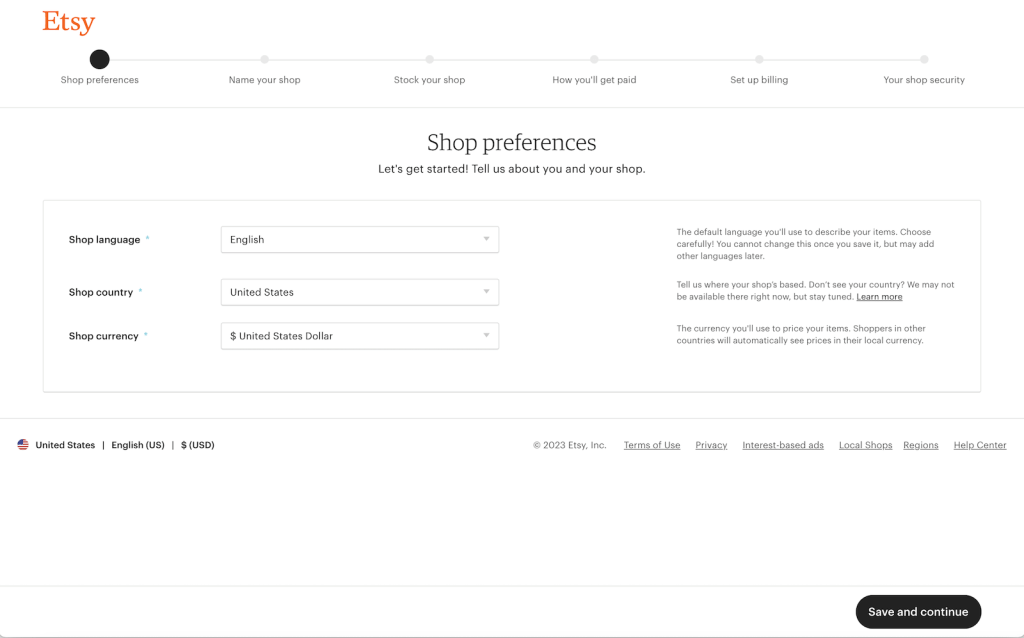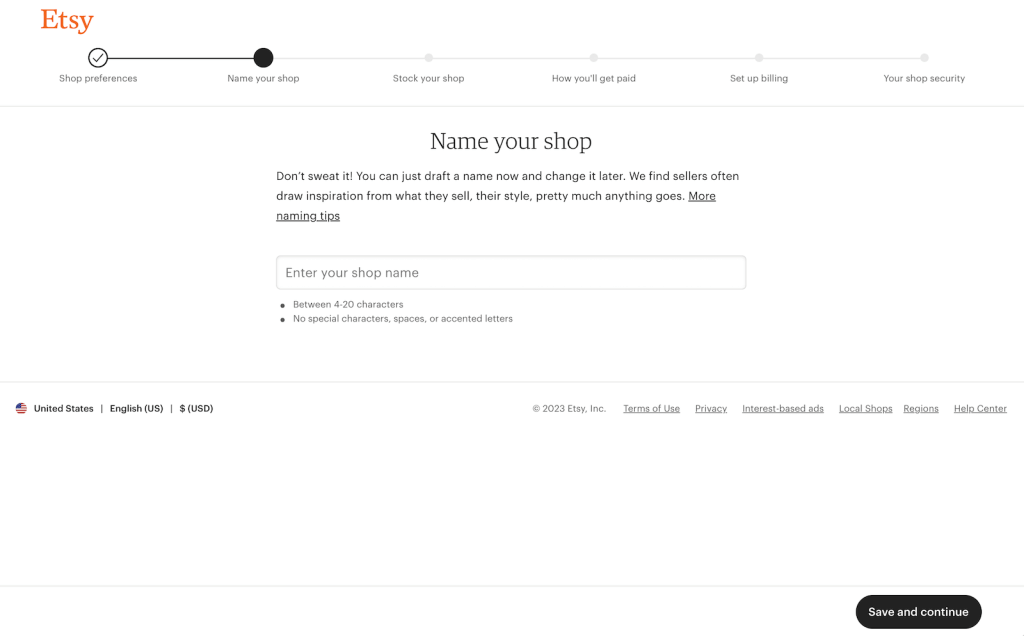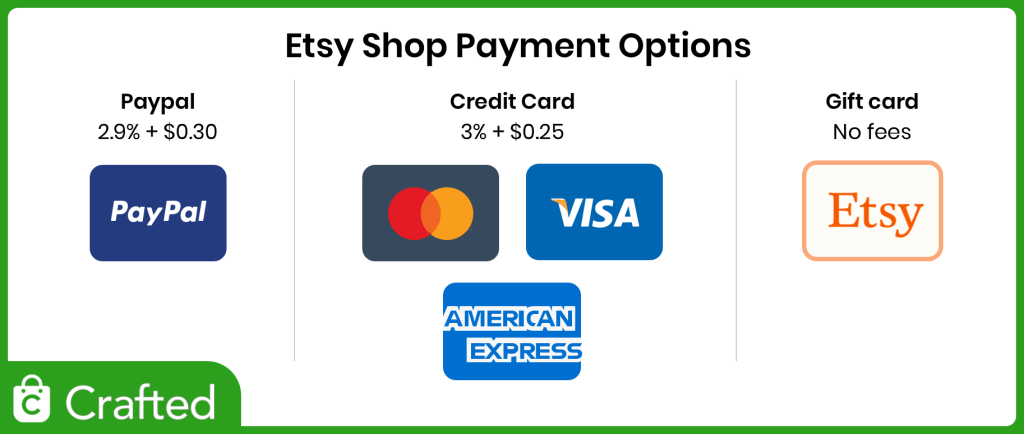If you’re a beginner looking to start an online business, creating an Etsy shop can be an excellent way to showcase your handmade or vintage products. With over 81 million active buyers worldwide, Etsy provides an excellent platform for small businesses to showcase their handmade or vintage goods, as well as craft supplies. We’ll take you step-by-step through process of creating an Etsy shop, from setting up your account to making your first sale. Lets get started!
Step 1: Create an Etsy Account
The first step in creating an Etsy shop is to create an Etsy account. You can either sign up with an email address or use your Facebook or Google account to create an Etsy account. Follow the prompts to fill in your personal information, such as your name, address, and phone number.

Step 2: Set Up Your Etsy Shop
After creating your Etsy account, you can then create your Etsy shop. Click on the “Sell on Etsy” button on the Etsy homepage and follow the prompts to set up your shop. You’ll be prompted to fill out some basic information, such as your shop name, a description of what you sell, and your shop’s policies.
Step 3: Choose Your Shop Name
Your shop name is an essential aspect of your branding, and it should be something memorable and easy to remember. Ideally, your shop name should reflect what you sell or the style of your products. Try to avoid generic names or names that are hard to spell.

Here are some tips and ideas for coming up with a good shop name:
- Make it unique: Try to choose a name that is not already taken by another Etsy shop or business. You can use the Etsy search bar to check if a similar name already exists.
- Use keywords: Use relevant keywords in your shop name to help buyers find your products. For example, if you sell handmade jewelry, include words like “jewelry,” “handmade,” or “artisan” in your shop name.
- Get creative: Your shop name can be a play on words, a pun, or a creative combination of words that reflects your personality and style.
- Keep it simple: Choose a name that is easy to spell and pronounce. Avoid using abbreviations or complicated words that may confuse buyers.
- Test it out: Before settling on a name, try it out on a few friends or family members and see if it sticks. You can also ask for feedback on social media or in online forums.
- Check availability: Make sure that the domain name and social media handles for your shop name are available, as you may want to expand your business in the future. You can use websites like Namechk.com to check the availability of your desired shop name across multiple platforms.
These are just a few ways you can come up with a memorable and unique shop name that reflects your brand and helps you stand out on Etsy.
Step 4: Write Your Shop Description
Your shop description is an opportunity to give potential buyers an idea of what your shop is about. Be sure to include what you sell, your shop’s history, and what sets your products apart from others. Make sure your description is engaging, informative, and easy to read.
Step 5: Set Your Shop Policies
Your shop policies are a set of guidelines that inform buyers about shipping times, returns, and exchanges. Make sure to add all of your policies, including your shipping methods, processing times, and refund policies.
Etsy has a Shop Policy Tool that can help you create these policies if you need guidance. You can access this tool by clicking on “Shop Manager,” then “Settings,” and then “Info and Appearance.” From there, select “Policies” and click on “Get started” to create or update your shop policies. Make sure to set clear policies to avoid confusion or misunderstandings with buyers. It’s important to review and update your policies regularly to ensure that they reflect any changes in your business.
You can also use our free Shop Privacy Policy generator to help with this.
Step 6: Create Your Shop Banner and Logo
Your shop banner and logo are the first things that buyers will see when they visit your shop, so make sure they’re visually appealing and reflective of your brand. You can use free online tools like Canva to create your banner and logo. Another tool you can use to create a logo is Shopify’s logo maker.

Here are some extra suggestions to help you design a visually appealing and representative banner and logo for your Etsy shop:
- Keep it simple: Your banner and logo should be easy to read and understand. Avoid using too many colors or complicated designs that may distract from your products.
- Use high-quality images: Make sure to use high-quality images for your banner and logo. This will ensure that they look professional and appealing to buyers.
- Reflect your brand: Your banner and logo should reflect your brand and the products you sell. Consider using colors, fonts, and images that are consistent with your brand’s style and personality.
- Be consistent: Use the same banner and logo across all of your social media platforms, website, and promotional materials to create a consistent brand image.
- Update regularly: Consider updating your banner and logo regularly to keep your shop fresh and up-to-date. This can also help attract repeat buyers and show that your shop is active.
- Don’t be afraid to ask for feedback: Once you’ve created your banner and logo, don’t be afraid to ask for feedback from friends, family, or fellow Etsy sellers. They can provide valuable insights and suggestions to help you improve your design.
Step 7: Create Your Product Listings
After setting up your shop, you can start adding your products to your shop. Make sure to include clear, high-quality photos of your products, along with detailed descriptions and pricing information. You can also add tags and categories to make it easier for buyers to find your products.

Step 8: Set Up Your Payment Method
When setting up your Etsy shop, you’ll need to choose a payment method that works best for you and your customers. Here are some of the most common payment methods on Etsy, along with their fee estimates:
- Credit card and debit card: If you use Etsy Payments to accept credit and debit card payments, the processing fee is 3% + $0.25 per transaction.
- PayPal: If you use PayPal to process payments, the fee is 2.9% + $0.30 per transaction.
- Etsy Gift Cards: There are no fees associated with accepting Etsy gift cards as payment.

It’s important to consider the fees associated with each payment method when setting your pricing strategy. Keep in mind that Etsy also charges a transaction fee of 6.5% on the total cost of the item, including shipping fees.
We created a Etsy Fee Calculator that can help you with these estimates.
Step 9: Launch Your Etsy Shop
Once you’ve set up your shop, added your products, and set your policies and payment methods, you’re ready to launch your Etsy shop. You can share your shop on social media, send the link to friends and family, and advertise on other platforms to get the word out about your new business.
Step 10: Make Your First Sale
After launching your Etsy shop, you’ll need to wait for buyers to discover your products and make a purchase. Once you receive your first sale, make sure to thank the buyer and fulfill the order quickly. You can also ask the buyer to leave a review of their experience, which can help attract more customers to your shop.
Step 11: Manage Your Etsy Shop
Running an Etsy shop requires ongoing attention and effort. Some of the day-to-day tasks involved in managing your shop will include:
- Updating your product listings: Regularly review and update your product listings to ensure that they accurately reflect your current inventory and pricing.
- Responding to customer inquiries: Respond promptly and professionally to any customer inquiries or messages that you receive through Etsy. This can help build trust with your customers and improve your reputation on the platform.
- Fulfill orders: Ship orders promptly and as described in your shop policies. Keep track of your inventory and order status to ensure that you’re meeting customer expectations.
- Analyzing metrics: Use Etsy’s analytics tools to track your shop’s performance, including your sales, traffic, and customer behavior. This can help you make informed decisions about your pricing, product offerings, and marketing strategies.
- Updating your shop policies: Regularly review and update your shop policies, including your shipping, return, and payment policies, to ensure that they reflect any changes in your business.
Step 12: Grow Your Etsy Shop
As your Etsy shop grows, you can experiment with different marketing strategies, such as running sales or offering discounts to repeat customers. Here’s a few tactics worth trying:
- Running sales or promotions: Offer discounts or free shipping to attract new customers and incentivize repeat purchases.
- Building a social media presence: Use social media platforms like Instagram or Pinterest to promote your products and engage with your followers.
- Collaborating with other Etsy sellers: Partner with other Etsy sellers to cross-promote your products and reach a wider audience.
- Offering exceptional customer service: Provide excellent customer service to build trust and loyalty with your customers. Respond promptly to inquiries and reviews, and consider offering personalized notes or thank-you gifts with each order.
Creating an Etsy shop can be a fulfilling and rewarding experience, but it does take time and effort to build a successful business and won’t happen overnight. Stay patient and persistent, and focus on creating quality products and providing exceptional customer service. By following the recommendations outlined in this guide, you can launch and grow a thriving Etsy shop that showcases your unique products and attracts buyers from all over the world.



